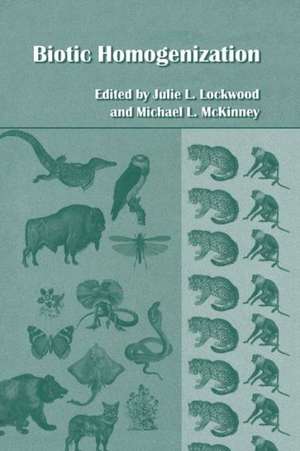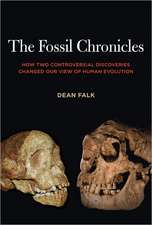Biotic Homogenization
Editat de Julie L. Lockwood, Michael L. McKinneyen Limba Engleză Paperback – 17 oct 2012
Biological homogenization qualifies as a global environmental catastrophe. The Earth has never witnessed such a broad and complete reorganization of species distributions.
| Toate formatele și edițiile | Preț | Express |
|---|---|---|
| Paperback (1) | 640.71 lei 6-8 săpt. | |
| Springer Us – 17 oct 2012 | 640.71 lei 6-8 săpt. | |
| Hardback (1) | 646.30 lei 6-8 săpt. | |
| Springer Us – 31 mai 2001 | 646.30 lei 6-8 săpt. |
Preț: 640.71 lei
Preț vechi: 753.77 lei
-15% Nou
Puncte Express: 961
Preț estimativ în valută:
122.60€ • 128.35$ • 101.44£
122.60€ • 128.35$ • 101.44£
Carte tipărită la comandă
Livrare economică 05-19 aprilie
Preluare comenzi: 021 569.72.76
Specificații
ISBN-13: 9781461354673
ISBN-10: 1461354676
Pagini: 304
Ilustrații: X, 289 p.
Dimensiuni: 155 x 235 x 16 mm
Greutate: 0.43 kg
Ediția:Softcover reprint of the original 1st ed. 2001
Editura: Springer Us
Colecția Springer
Locul publicării:New York, NY, United States
ISBN-10: 1461354676
Pagini: 304
Ilustrații: X, 289 p.
Dimensiuni: 155 x 235 x 16 mm
Greutate: 0.43 kg
Ediția:Softcover reprint of the original 1st ed. 2001
Editura: Springer Us
Colecția Springer
Locul publicării:New York, NY, United States
Public țintă
ResearchCuprins
1. Biotic Homogenization: A Sequential and Selective Process.- 2. Biotic Homogenization: Lessons from the Past.- 3. Birds and Butterflies Along Urban Gradients in Two Ecoregions of the United States: Is Urbanization Creating a Homogeneous Fauna?.- 4. Rarity and Phylogeny in Birds.- 5. Hybridization between Native and Alien Plants and Its Consequences.- 6. Taxonomic Selectivity in Surviving Introduced Insects in the United States.- 7. Are Unsuccessful Avian Invaders Rarer in Their Native Range Than Successful Invaders?.- 8. A Geographical Perspective on the Biotic Homogenization Process: Implications from the Macroecology of North American Birds.- 9. Global Warming, Temperature Homogenization and Species Extinction.- 10. The History and Ecological Basis of Extinction and Speciation in Birds.- 11. Downsizing Nature: Anthropogenic Dwarfing of Species and Ecosystems.- 12. Spatial Homogenization of the Aquatic Fauna of Tennessee: Extinction and Invasion Following Land Use Change and Habitat Alteration.- 13. Homogenization of California’s Fish Fauna Through Abiotic Change.- Contributors.
Recenzii
`Biotic Homogenization is a useful and interesting compilation. Certainly it belongs in the stacks of any library aiming to have a good natural sciences collection, and it might serve well as a textbook for courses addressing issues of biodiversity or species invasion in an in-depth fashion. Each chapter's commendable list of references cited will no doubt make life easier for a number of graduate students in the coming years, and the peer-review quality of each author's contribution makes the book a notable reference work, one which can serve as a primary source in its own right.'
Rich Haydon, Lake Wenatchee and Leavenworth Ranger Districts, US Forest Service in Natural Areas Journal, 22:3
`Overall, the book addresses a very important and increasing problem and provides some very useful evidence to guide further work. I would certainly recommend it to anyone working in the field of conservation biology.'
Andrew Pullin, School of Biosciences, University of Birmingham, UK in Biological Conservation, 103
Rich Haydon, Lake Wenatchee and Leavenworth Ranger Districts, US Forest Service in Natural Areas Journal, 22:3
`Overall, the book addresses a very important and increasing problem and provides some very useful evidence to guide further work. I would certainly recommend it to anyone working in the field of conservation biology.'
Andrew Pullin, School of Biosciences, University of Birmingham, UK in Biological Conservation, 103









